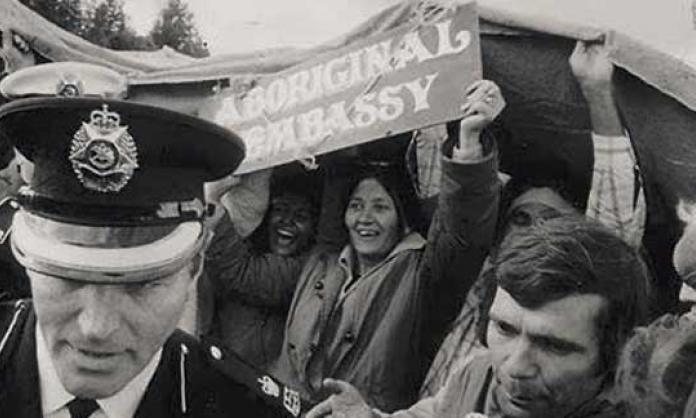Auntie Pat Eatock, veteran Aboriginal fighter and socialist, has died after a long illness.
In recent times, Pat was probably best known for her role in the victorious legal case against right wing columnist Andrew Bolt in 2011. She and eight other Aboriginal activists took on Bolt’s claim that they (and by implication, other fair-skinned Aboriginal people) identified as Aboriginal only for the money.
This ridiculous racist allegation was thoroughly disproved in Eatock v Bolt. Pat’s own story, told there, gives an insight into the life of Aboriginal working class people, and how she became the fighter she remained to the end.
Pat’s extended family included working class militants and Communists like her grandmother Lucy Eatock, but the family had denied their Aboriginality for the obvious reason that the Australian state routinely stole light-skinned Aboriginal children from their families.
In Pat’s own words, she first encountered her own Aboriginality when she started school. “The playground at that school was divided with a fence down the centre. On one side of the fence, the white kids played and on the other side of the fence, the black kids played. Because we had a white mother and fair skin, my sisters and I were put into where the white kids play. Three weeks later when my father came home on leave people in the town went ‘shock, horror, it's a ‘mixed marriage’. A mixed marriage was extremely unusual at that time, particularly when the female was the non-Aboriginal. When the school realised that my father was Aboriginal, they took us out of the white kids’ playground and put us in the black kids’ playground.”
Like many working class people of her generation, Pat left school early. Between 1951 and 1956, she did an assortment of factory work. But it was when she went to a public meeting addressed by anti-racist activist Faith Bandler in the early 1960s that Pat’s activism became more explicitly political. Pat was never active solely about racism. Her working class background and politics informed how she viewed the world. She was a women’s liberationist, a trade unionist and a socialist, in her later years joining the Socialist Alliance.
But her activism centred on the fight for Aboriginal rights. In 2007, when the Northern Territory intervention into Aboriginal communities began, Pat was one of the founders of the Aboriginal Rights Coalition that opposed it – with her now deceased son Greg and daughter Cathy.
I first met Pat in Canberra in 1973. She was then a remarkable single mother of six. By that time she was already a stalwart of the Aboriginal Tent Embassy that had been set up in 1972. One of the best photos we have of Pat was taken after an attempt to tear down the Tent Embassy. Cathy Eatock writes of it: “Pat Eatock is jubilant holding the Aboriginal Embassy sign high, as other Embassy members continue to hold up the tent after its demolition by the police. They refused to accept its removal and defiantly re-erected it, several times.” More than 40 years later, the Embassy still stands.
It was fittingly at the Embassy in 2012 that Pat Eatock was again in the news. When then prime minister Julia Gillard lost one of her shoes in a hasty retreat from protesters marking the Embassy’s 40th anniversary, a quick-thinking Socialist Alternative member picked it up. It was a no-brainer to pass it on to Pat to make the most of the ensuing publicity for the cause of Aboriginal rights.
Pat was always a source of inspiration and knowledge, on a wide range of subjects. She will be sorely missed.
Funeral details: 11.30am Monday 23 March at Eastern Suburbs Memorial Park, South Chapel Crematorium, followed by a commemoration at Redfern Community Centre, 29-53 Hugo Street.









